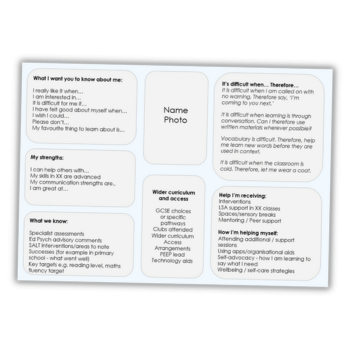Core leadership traits – 4 tips for any teachers wanting to join their SLT

Different leadership roles can involve different challenges, writes Dame Alison Peacock, but there are some core attributes that any teachers eyeing up a more senior position can start honing right now…

Over my career in the education sector I’ve been a teacher, headteacher, governor, and researcher before my current role as CEO of the Chartered College of Teaching.
Whilst each of these posts have presented their own unique challenges and rewards, the golden thread has been the need to connect with others – to engage people and pupils in how to think critically, and support them in their learning.
The way you support students, and the need to develop and encourage a team of colleagues, are key aspects of any senior leadership role – but how should you go about gaining those crucial skills needed to become a great leader? Here are some tips and tricks I’ve picked up throughout my own career, which may help to empower any readers contemplating taking their step into senior leadership.
1. Judge whether you’re ready
Like all professionals, teachers achieve their best results by being challenged in their role. A key factor when deciding whether to advance into senior leadership will be that your teaching job no longer challenges you as it previously did. If that’s the case, consider those elements of the role you enjoy and excel in the most, and how you might be able harness these when taking on the challenges involved in senior leadership.
Senior leadership roles span all sorts of responsibilities – from subject to pastoral, and managerial to exams. The passion you have for your specialist subject could be an advantage when applying for a head of department role, or as a core subject leader/co-ordinator. By way of an initial step, you could demonstrate your level of interest and capability by taking on a Teaching and Learning Responsibility (TLR), such as running a club or coordinating a revision programme.
2. Look further afield
Advancing to a new, more senior position may well involve joining a different school. It’s worth researching the senior leadership posts being advertised on recruitment websites, such as Teaching Vacancies – a free service provided by the government that will let you filter roles based on location, job title, phase and working patterns, and sign up for job alerts so that suitable SLT roles can be sent straight to your inbox.
3. Set yourself apart
A great way of demonstrating your eligibility for a new role is to undertake a National Professional Qualification (NPQ), which are free voluntary qualifications designed to support the professional development of teachers and leaders. The current suite of NPQs are presently too new for any impact data to be available, but a 2017 DfE study showed that 87% of NPQ participants said they had learnt new skills which increased their readiness and confidence in leadership roles.
Leadership NPQs support development of the knowledge, behaviours and networks educators will need if they’re to become well-performing leaders. They can be taken at any time in your professional journey, and will demonstrate good initiative and care for your profession. You can then opt to go further and seek accreditation as a Chartered Teacher, which will formally recognise an individual’s career-long development via a rigorous suite of assessments. More information about this can be found visiting the Chartered College of Teaching’s website at chartered.college.
4. Be proactive
Look out for any opportunities to observe and learn from your colleagues first-hand in various everyday situations. These might include taking part in formal classroom observations, and asking questions such as, “How do you manage your department and teaching responsibilities?” or “What are the best ways of managing a team that you’ve found?”
Stay engaged, and continue to seek additional opportunities for learning outside of your standard formal development. Understanding what’s expected of those at a more senior level in your school will help you to develop a bank of your own examples, which you can then use to make your case for promotion.
There’s no standardised approach to career development. Everyone will feel ready to take the jump to senior leadership at their own pace, but by reflecting on your own strengths, learning from colleagues and through professional training, you’ll be able to confidently advance your career.
Dame Alison Peacock is a former secondary teacher and primary headteacher, and is currently CEO of the Chartered College of Teaching; for more details, visit chartered.college or follow @CharteredColl











